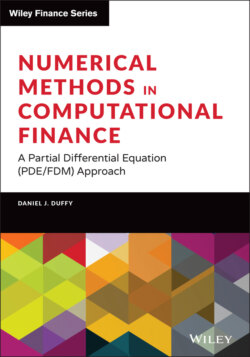Читать книгу Numerical Methods in Computational Finance - Daniel J. Duffy - Страница 29
1.6.1 Metric Spaces
ОглавлениеWe work with sets and other mathematical structures in which it is possible to assign a so-called distance function or metric between any two of their elements. Let us suppose that X is a set, and let x, y and z be elements of X. Then a metric d on X is a non-negative real-valued function of two variables having the following properties:
The concept of distance is a generalisation of the difference between two real numbers or the distance between two points in n-dimensional Euclidean space, for example.
Having defined a metric d on a set X, we then say that the pair (X, d) is a metric space. We give some examples of metrics and metric spaces:
1 We define the set X of all continuous real-valued functions of one variable on the interval [a, b] (we denote this space by C[a, b])), and we define the metric:Then (X, d) is a metric space.
2 n-dimensional Euclidean space, consisting of vectors of real or complex numbers of the form:with metric:
3 Let be the space of all square-integrable functions on the interval [a, b]:We can then define the distance between two functions f and g in this space by the metric:This metric space is important in many branches of mathematics, including probability theory and stochastic calculus.
4 Let X be a non-empty set and let the metric d be defined by:Then (X, d) is a metric space.
Many of the results and theorems in mathematics are valid for metric spaces, and this fact means that the same results are valid for all specialisations of these spaces.
